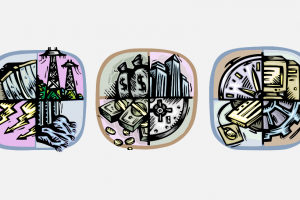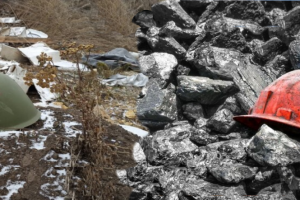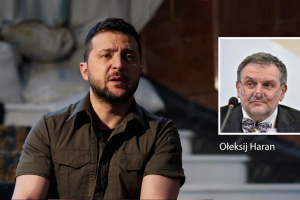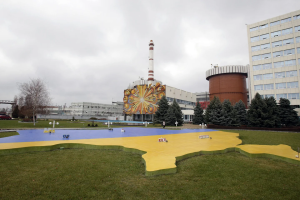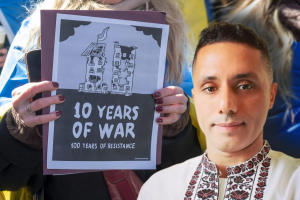International developments
Russia tries hard to ensure full support of its aggressive war efforts from the PRC leadership. The phone call between Chairman Xi and Russia’s Putin led to worries Beijin might take a firmer stand in support of Moscow’s war-criminal actions. However, China has its own clear interests in the war which have more to do with weakening both parties - the West and the Russians, without any unnecessary risky escalations, such as nuclear threats and blackmail. That clearly doesn’t play into Putin’s plan and allows China to remain relatively distant and uninvolved player.
France step up in an attempt of taking a lead in a new phase of providing military assistance to Ukraine with its decision to send Kyiv the AMX-10RC light tanks along with Bastion IFVs. Paris’ strategic decision came right after the phone call between President Macron and his Ukrainian counterpart President Zelenskyy and was shortly followed by the same-magnitude steps taken by Washington and Berlin.
The United States officially acknowledged sending 50 Bradley M2A2 ODS IFVs to Ukraine as a part of the second largest military aid package of $2.8 billions announced by the Biden Administration. Germany followed by its decision to provide Ukrainian Army with 40 Marder IFVs and an additional Patriot SAM battery - a move marking a significant shift in Berlin’s views of the military assistance it provides Ukraine with.
Russia’s Putin initiated a so-called “Christmas cease-fire” in an attempt to have a small breathing room due to the dare situation of Russian forces desperate for reinforcements both on Southern and Eastern fronts. The initiative was set in motion after after the phone call Putin received from Turkish President Erdogan and the latter’s statement that any Russian pledges to peace negotiations should be supported by the unilateral ceasefire from the Russian side. Thus Putin’s initiative seemed to be lame respond to the Turkish President demand.
Following the French, US and German initiative to provide Ukraine with modern IFVs, Poland announced it's future decision to send a full company of German-made Leopard main battle tanks to Ukrainian Armed Forces. This announcement came just a day later after Great Britain officially confirmed it's considering sending its Challenger 2 MBTs to aid in Ukrainia counteroffensive preparations. The trend was followed by the Canada decision to buy Ukraine an additional battery of NASAMS.
War/Security Situation
Russian Engels strategic airbase was hit for the second time by Ukrainian forces in an effective attempt to disrupt Russian plans of conducting long-range missile strikes against Ukrainian civilian targets. Officially unconfirmed reports of at least 5 Tu-95 strategic bombers damaged along with service airfield equipment, control tower and personnel casualties seemed to be proved correct by Russian delay and relatively lower scale of further missile strikes later in the week.
Russian forces continue to prepare defensive positions on the Southern front, Kherson and Zaporizhzhia regions, while trying to draw Ukrainian forces into fierce (though fatal to Russian troops) battles on key Eastern front positions, Bakhmut and Soledar in the first place. Except tactical and propaganda objectives there also seem to be certain private interest in Russia’s pressing on these directions, as Prigozhin’s “Wagner” PMC threw some of its most elite forces into battle to take control of the natural resources and mining installations of the area.
Recommendations
1. Western nations should pay more heed for the growing influence China has on Russia in terms of the latter’s growing dependence on the Beijin‘s international, economic, financial and military support, along with the clear unwillingness of Chinese authorities to take a firm stand on a Russian side.
2. The Ukrainian ability to efficiently strike deep into Russian territory against military targets with maximum precision considering the available means proves the West should seriously consider providing Ukraine with long-range precision weapons to deliver sure and stronger blows to Russian military infrastructure utilized in an aggressive war against Ukraine.
3. After the strategic decisions made in Paris, Washington and Berlin, Ukraine and Western nations should look at the next coming Ramstein meeting of January, 20, as a next major step ahead in providing Kyiv with even more sophisticated weapons such as modern main battle tanks, fighter jets and long-range missiles to close the remaining gaps and even the score on the battlefield.
4. Russia’s Putin so-called “Christmas cease-fire” initiative in an attempt to have a small breathing room due to the dare situation of Russian forces both on Southern and Eastern fronts was met with significant domestic criticism deepening the divide between Russian president and influence groups in his surrounding. Ukraine and Wrstern nations should pay close heed to these trends as they might mark the shape of the future power struggle in the defeated Russia.
5. Russian offensive desperately lacks resources leaving Kremlin in a stalemate, unable to effectively move forward on any of the two key directions - Southern and Eastern. This opens the West a window of possibility to speed up military assistance provided to Ukraine by giving UAF an edge to start counteroffensive much sooner then Russian generals might expect.
__________________________
This policy brief was prepared as part of a project “Russia-Ukraine Conflict: from Full-Scale War to Conflict Resolution and Post-War Reconstruction” implemented in cooperation with the Razumkov Centre with the support of the MATRA program of the Embassy of the Netherlands. The opinions expressed are those of the author(s) only and should not be considered as representative of the Embassy’s official position.

